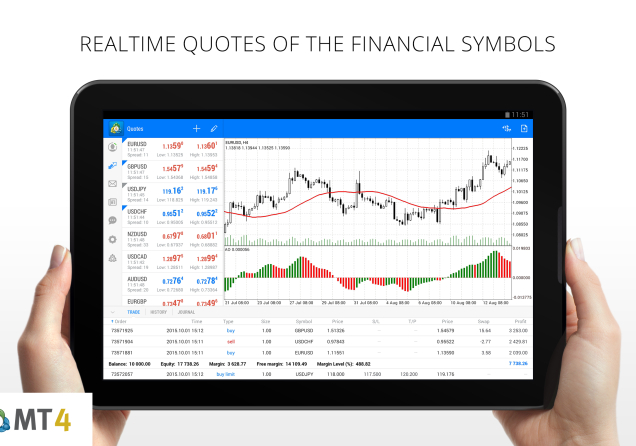How to Use Fibonacci Retracement in Crypto and Forex Analysis
| Disclaimer: The information provided in this article is for educational and informational purposes only and does not constitute financial or investment advice. Trading indices involves risk, and you should consult a qualified financial advisor before making any investment decisions. |
Do you know that around 60% of professional traders rely on Fibonacci retracement? It’s not because it’s some magic formula, but because it works. In markets like cryptocurrency and foreign exchange, where price swings are the norm, this simple, centuries-old mathematical tool helps traders identify where price reversals are likely to occur.
Take Bitcoin’s 2021 crash, for example. The 61.8% retracement level acted like a trampoline, launching a massive 300% rally. If you’d missed that level, you’d have missed the trade.
Here’s the thing, though, most retail traders mess up when using Fibonacci. They slap lines on a chart, ignore what the price is doing, and then wonder why their trades flop. The truth is, Fibonacci isn’t a crystal ball; it’s a probability tool. When used correctly, especially when combined with price action, it provides high-probability setups with laser precision.
In this guide, I’ll break down how the pros, hedge funds, and crypto whales use Fibonacci retracement. We’ll cover the key levels that matter, and I’ll show you how to avoid the common mistakes that wipe out most amateur traders.
Ready to start trading smarter? Let’s dive in.
What is Fibonacci Retracement?
Fibonacci retracement is a tool that traders use in an attempt to spot where prices can retrace on a trend. To describe the mechanism, we have to travel back over 800 years to a mathematician named Leonardo Fibonacci.
Fibonacci created a sequence of numbers 0, 1, 1, 2, 3, 5, 8, 13, and so on in which every number is simply the sum of the last two. This sequence is ubiquitous, from seashells to galaxies. Of particular interest to traders is the Golden Ratio, roughly 1.618 (or .618 when turned on its head). It is a derivation of the Fibonacci sequence.
Fibonacci retracement uses this ratio in price chart trading. It helps traders know where support or resistance would be for the market. It essentially measures to what degree an initial price movement a market will retrace before continuing the initial trend. It comes in handy with fast-moving markets like crypto and forex, where you get a lot of pullbacks and trend reversals.
The most significant retracement levels to seek are:
- 23.6%: A small pullback, typical of strong trends.
- 38.2%: A correction, which also shows a trend, might persist.
- 50%: Not a Fibonacci figure but a significant psychological point—often associated with halfway retracements.
- 61.8%: The "golden" retracement, a deep correction and potential turning point.
- 78.6%: A final line of defence before the trend might completely reverse.
Traders mark these points on a price chart by finding a significant high and a low (or vice versa) and dividing the vertical distance between these significant ratios. What you have is a graphical map of potential areas of support and resistance where the price will most probably stall or bounce.
On shaky markets like crypto and forex, where prices can swing inconsistently, Fibonacci retracement gives you an organized way to manage entries, exits, and risk. Just remember that it is not a predictive tool. It's a system that works best when you use it in conjunction with other technical analysis tools and price action signals.

How to Draw Fibonacci Retracement Correctly
Drawing Fibonacci retracement the right way can be the difference between making money and losing it. Here's how to do it step by step and use it as part of a solid trading strategy.
-
Step 1: Identify the Swing High and Swing Low
First, you need to find the price move you want to analyze. Look for a clear swing high (the peak) and swing low (the bottom) that show the trend you're measuring. For an uptrend, draw from the swing low to the swing high. For a downtrend, draw from the swing high to the swing low.
The trick is to use obvious, major price swings, not small bumps in price. You want highs and lows that really stand out on your chart and make sense when you look at how price moved.
-
Step 2: Apply the Fibonacci Tool
After you've found your swing high and low, it's time to use the Fibonacci tool. Most trading platforms have this built in, MetaTrader 4 (MT4), TradingView, and Binance all have it.
On MT4, click "Fibonacci Retracement," then click on your swing low (or high) and drag to the swing high (or low).
On TradingView, grab the retracement tool from the toolbar and do the same thing.
On Binance and other websites, locate it in "technical indicators" or "drawing tools."
After applying it, the platform will automatically draw the key retracement levels: 23.6%, 38.2%, 50%, 61.8%, and 78.6%.
-
Step 3: Account for Logarithmic vs. Linear Scales
In forex trading, linear scales usually work fine since currencies move pretty smoothly. But in crypto, where prices can explode or crash fast, logarithmic scales often work better. This adjusts your chart to show percentage moves instead of dollar amounts, which gives you a more accurate picture.
Check your chart settings and switch between linear and log scales to see which one shows the market structure more clearly.
Pro Tip: Avoid the Common Mistake. The biggest mistake traders make is forcing Fibonacci onto any chart. If the price move isn't obvious, if you can't clearly see the swing high and low, or if there's no real trend, don't use it. Fibonacci works best on clear, significant price swings. Don't draw retracements just because you want the market to do something specific. Let the actual price movement show you where to draw the lines.
Best Fibonacci Retracement Strategies for Trading
After you learn how to draw Fibonacci retracement levels, you need to turn them into actual trades. Here are three solid Fibonacci strategies that mix with other technical tools to help you make better trades and lose less money in both crypto and forex.
Strategy 1: 61.8% Bounce + RSI Confirmation
The 61.8% retracement level, the "golden ratio" is where price often turns around. Smart traders wait for price to pull back to this level before jumping in.
But don't just use Fibonacci by itself. Add the Relative Strength Index (RSI) to confirm what's happening. Look for RSI to drop below 30 (oversold) during an uptrend or climb above 70 (overbought) during a downtrend when price hits that 61.8% level. When both things happen together, there's a better chance the price will bounce back and continue the original trend.
Strategy 2: 50% Retracement + Trendline Break
The 50% retracement level isn't technically a Fibonacci number, but it matters because it's the halfway point of a move. Markets often pause or turn around at this level because traders think about it psychologically.
Make this stronger by adding a trendline break. Draw a trendline along the pullback pattern. When price reaches the 50% level and breaks through your trendline at the same time, it suggests the trend might be ready to continue.
This works well in crypto, where you get sharp pullbacks, and in forex, where trends often respect these psychological levels.
Strategy 3: Fibonacci Combined with Moving Averages
A bit more effective way would be the merger of Fibonacci levels with moving averages, for example, of simple type-50-day or 200-day Moving Average. Do the following:
- Determine a clear trend and draw your Fibonacci retracement.
- Watch the price pull back to one of the key Fibonacci levels, 38.2%, 50%, or 61.8%.
- If such a degree aligns with an important moving average, you have identified a much stronger support or resistance area.
For example, if Bitcoin is in an uptrend and it pulls back to the 50% retracement level, that same level coincides with the 50-day moving average, you're good to go as regards where price might bounce. The chances of profitable trade increase when multiple indicators point at the same spot.

Common Fibonacci Errors to Avoid
Fibonacci retracement works, but only if used properly. Most traders, especially new ones, have errors that make an efficient tool turn profitable for other people into losses for them. Below are how to avoid the most popular Fibonacci errors and what causes Fibonacci to fail for others.
Using It in Choppy Markets
The biggest mistake is plotting Fibonacci lines when there is no discernible trend—traders' "choppy" signals. If price really bounces around with no discernible highs and lows, the levels of retracement are worthless. Instead of showing traders where price will rebound, they are nothing more than generators of confusion and bad signals.
Before you go ahead and plot any Fibonacci lines, make sure the market has a solid trend. If the chart is cluttered or price is just going sideways, wait for better conditions.
Ignoring Higher Timeframes
Another gigantic mistake is paying attention to short-term charts and ignoring the big picture. Even if you're trading small timeframes, you have to look at higher timeframes (such as daily or weekly charts) for main trends and major levels.
Why it's significant: strong support or resistance on larger timeframes can override Fibonacci levels you mark on lower-timeframe charts. If your higher-timeframe resistance happens to coincide with your Fibonacci level, the signal is that much stronger. But if they conflict, price can completely ignore your retracement level.
Over-Relying on Fibonacci Alone
Fibonacci retracement in itself is not a trading system, but a tool. The majority of traders are guilty of applying only Fibonacci lines without any verification from other indicators or price action. This creates incorrect expectations and poor trade.
Good traders incorporate Fibonacci together with other technical tools like:
- Price action study (support and resistance and candlestick formations)
- Momentum indicators (MACD, RSI)
- Moving averages
- Trendlines
Applying Fibonacci alone is like using a thermometer to forecast the weather, you need additional information. Always use it in conjunction with other indicators to improve the context of what the market is accomplishing.

Advanced Fibonacci Trading Tips
After becoming comfortable with basic Fibonacci retracement, you can move to Fibonacci advanced techniques. Here are some tips and tricks to help you achieve better results in both crypto and forex trading.
Using Fibonacci Extensions as Profit Targets
Fibonacci retracement helps you determine where price might pull back, but Fibonacci extensions go a little further by informing you where price might project after the pullback is complete.
Here's the process:
Once a retracement is finished and price starts moving in its original direction again, utilize the Fibonacci extension tool (this can be found on TradingView or MT4).
The tool shows significant extension levels, usually 127.2%, 161.8%, and 261.8% beyond the first swing high or low.
These are zones of possible profit-taking where price could decelerate or reverse.
Fibonacci extensions are ideally applied in trending markets because they give you targets instead of leaving you uncertain about where to close your trades.
Applying Fibonacci during Altcoin Season
Altcoin season in cryptocurrency is when alternative cryptocurrencies start pumping hard. During such periods, Fibonacci tools can be highly useful:
- Apply the retracement levels to see where altcoins may find a level of support after breaking out.
- Use Fibonacci levels in conjunction with volume analysis and moving averages to search for good entry opportunities.
- Use extensions to set reasonable profit targets in these quickly moving, and sometimes illiquid, markets.
Since altcoins are often extremely volatile, use larger stop losses and utilize logarithmic scales for more precise readings.
Intraday vs. Long-Term Fibonacci Setups
You can use Fibonacci for both scalping (short-term trade) and swing trading (longer-term position):
- For intraday setups like forex scalping or crypto day trading, graph retracements on lower time frames like 5-minute, 15-minute, or 1-hour charts. Hunt for quick pullbacks to key levels, then go long or short with tight stops and low profit targets.
- For long-term arrangements (daily, weekly charts), find major swing highs and lows to capture more marketplace activity. These locations often coincide with where large institutions are active and are stronger support or resistance.
No matter what timeframe you use, always apply Fibonacci in combination with other confirmation aids like trendlines, moving averages, or momentum indicators to make your trade rational.
Tools & Indicators to Utilize with Fibonacci
Fibonacci retracement levels in themselves will not turn you into a successful trader. To heighten your accuracy and confidence, you are required to utilize them in conjunction with other trustworthy indicators. Listed below are some of the top indicators that can be utilized with Fibonacci retracement in crypto and forex trading.
-
Relative Strength Index (RSI)
The RSI shows the momentum and overbought or oversold state of a price. When price retraces to a major Fibonacci level (like 38.2% or 61.8%) and RSI shows oversold in an uptrend or overbought in a downtrend, there are chances of a reversal. With this, you have a much better trade setup.
-
Moving Average Convergence Divergence (MACD)
The MACD follows trends as it measures the interaction between two moving averages. When used in combination with Fibonacci retracement, it can confirm how strong a trend is. As an example, if the price comes back to a Fibonacci point and the MACD lines cross in the trend direction, it can confirm a strong entry.
MACD also shows divergence signals, which help you spot trend reversals or when a trend might be overbought as price is making its way or rebounding off of Fibonacci levels.
-
Volume Profile
Volume Profile shows how much traded at different price levels. Where a major Fibonacci level overlaps a high-volume node, an area of high volume, a spot where a lot of trading occurred, it generally is good strong resistance or support. This overlap makes you even more sure that price will respect that level.
Volume Profile also works well in crypto markets, where liquidity can swing massively, and in forex, where institutional big orders move prices.
-
Order Flow Analysis (for Forex)
For more advanced traders, especially in forex, order flow analysis (when buy and sell orders are watched) can add an added layer of precision. By watching order flow at major Fibonacci levels, you will be able to predict whether a retracement level will break or hold.
Order flow data, usually provided by brokers or specialized platforms, tells you how much of the orders are waiting to buy or sell at or near levels of support or resistance. This gives you a better sense of what will happen next.
The Bottom Line
Fibonacci retracement is not lines on a chart, it's a method of determining potential turning points in the forex and cryptocurrency markets. Once you understand from where Fibonacci levels are calculated, how to correctly draw them, and how to keep from falling into traps, you can use this tool to enhance your trading.
Here's what we've covered:
Fibonacci retracement identifies potential continuations and pullbacks by utilizing key ratios such as 38.2%, 50%, and 61.8%. Fibonacci retracement properly plotted entails clear swing highs and lows, a suitable time frame, and not applying levels where it does not make sense logically.
The ideal strategies combine Fibonacci with other indicators such as RSI, MACD, and trendlines to validate your trade setups and enhance your win rate. Fibonacci extensions, using them in altcoin season, and adjusting your strategy for other timeframes are a few advanced strategies that can further improve your trading.
Combining Fibonacci with other tools and indicators like Volume Profile, Order Flow (for forex), and momentum indicators makes your analysis stronger and your trades more accurate. Remember, however, that Fibonacci is not magic. It's a probability tool that works best when you combine it with other strategies and good risk management.
Ready to try it out for yourself? Start with a demo account first. Play around with identifying swing points, drawing retracement levels, and coupling them with other indicators. Once you're comfortable, you can start to apply Fibonacci retracement to your live trading.
Top-Tier Trusted Brokers
The table below contains links to 3rd party websites of our top partners from whom we receive compensation at no additional cost to you.


























